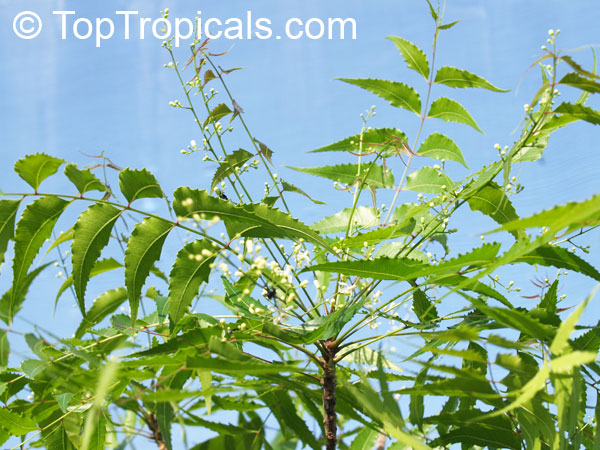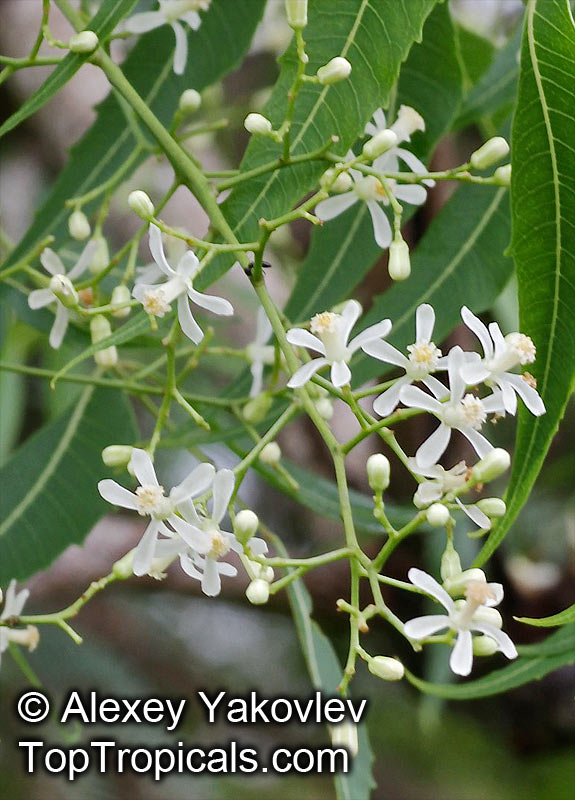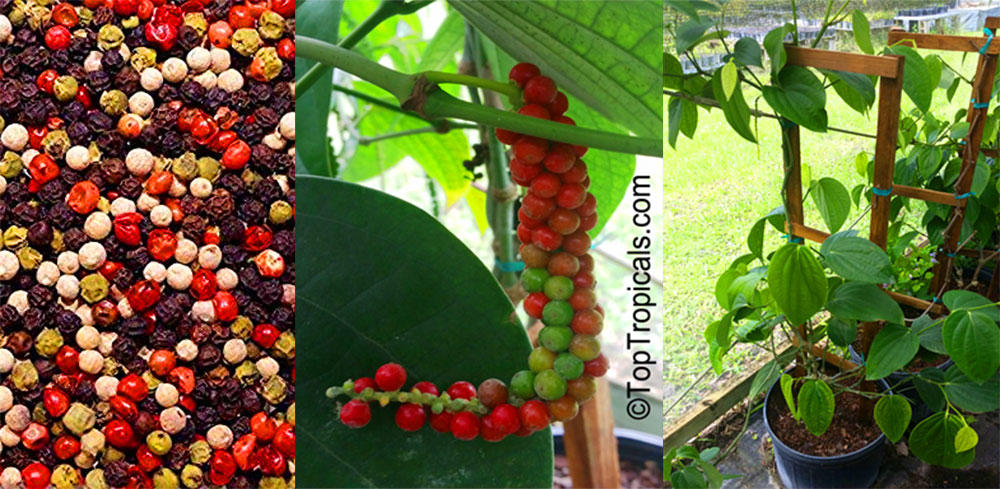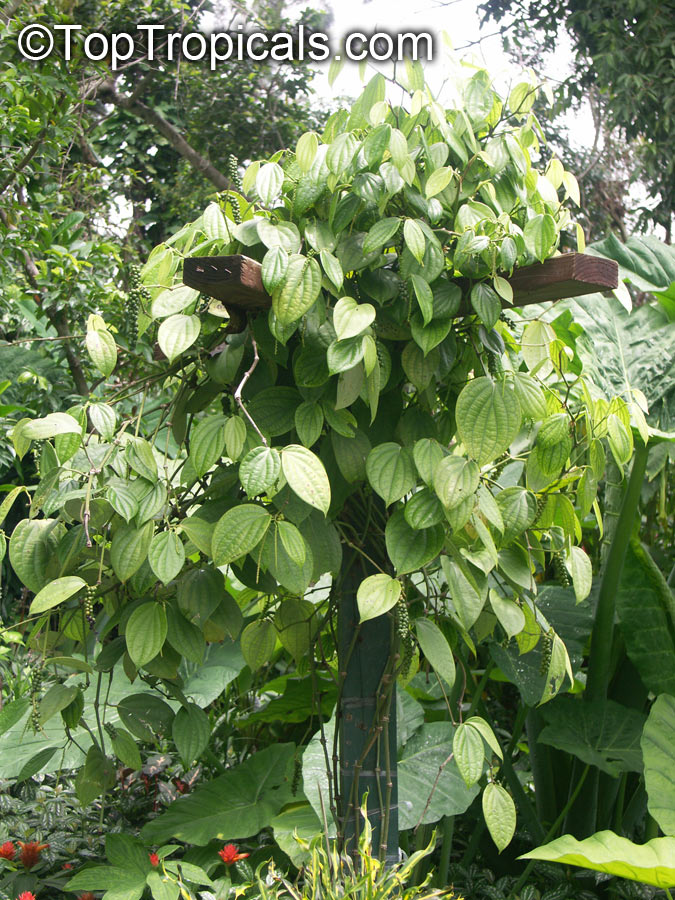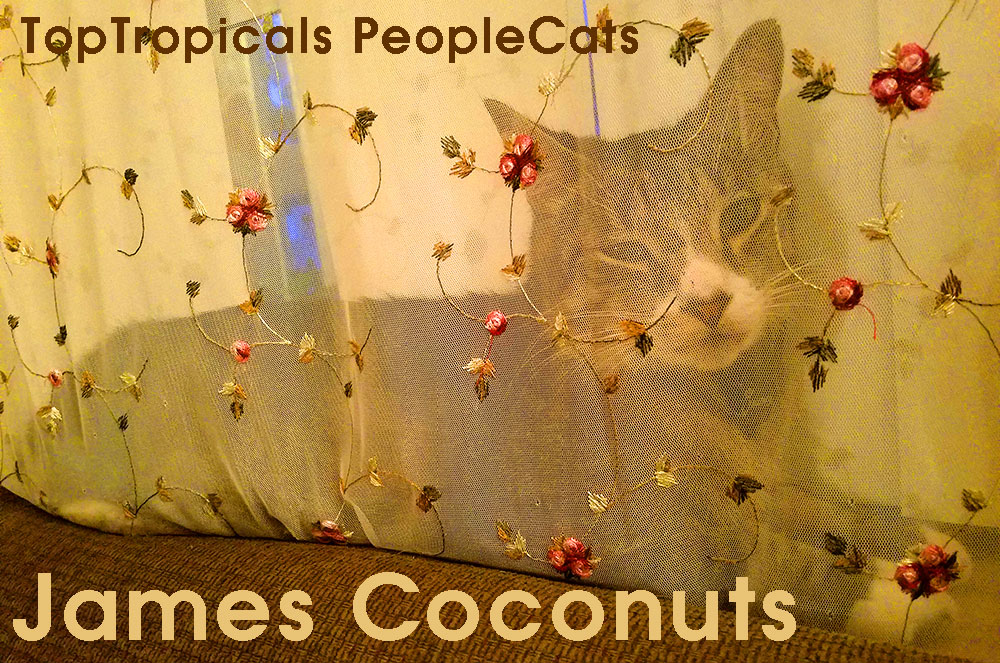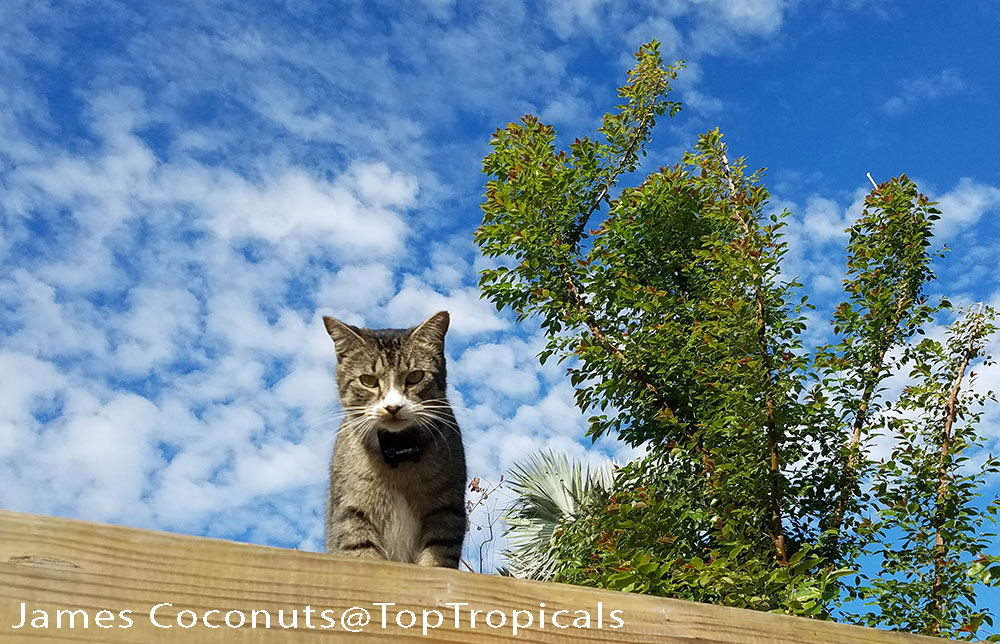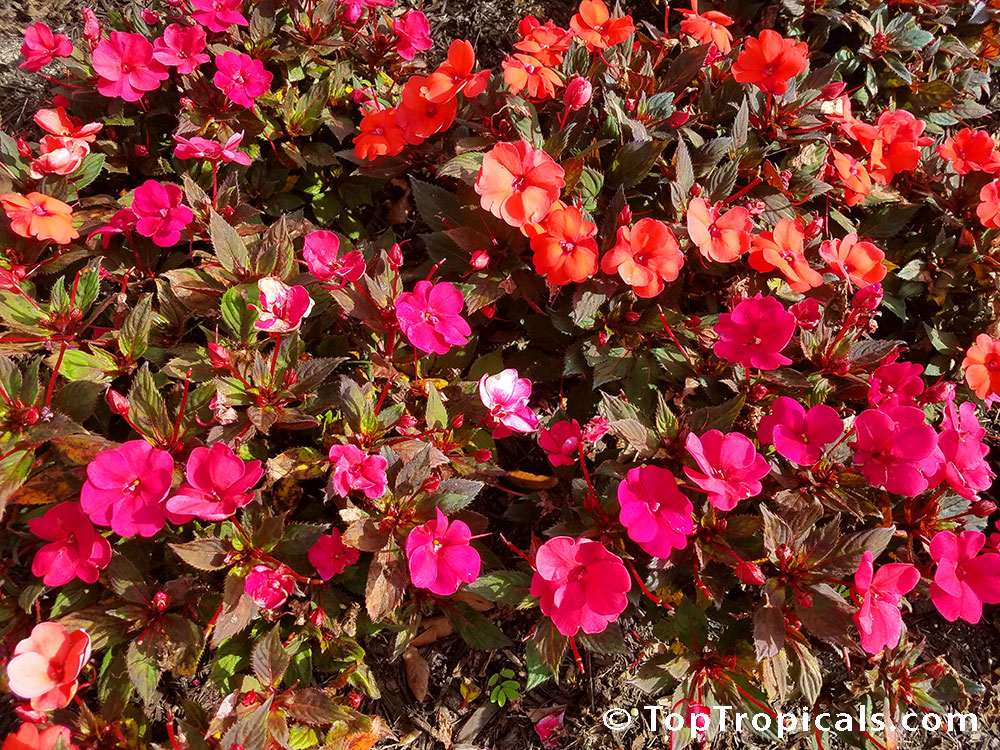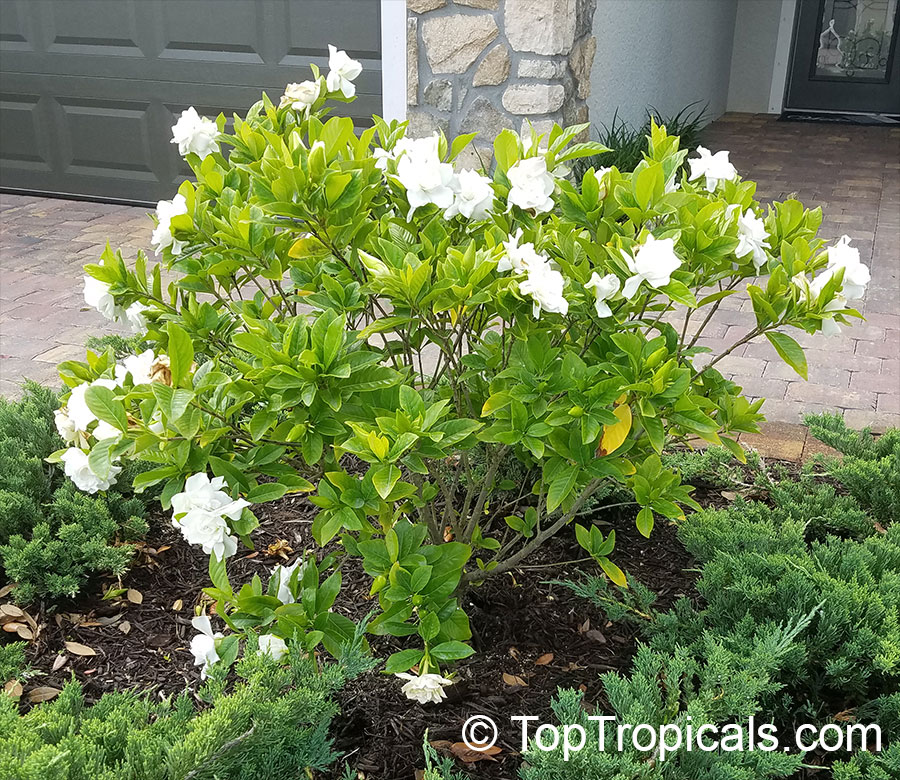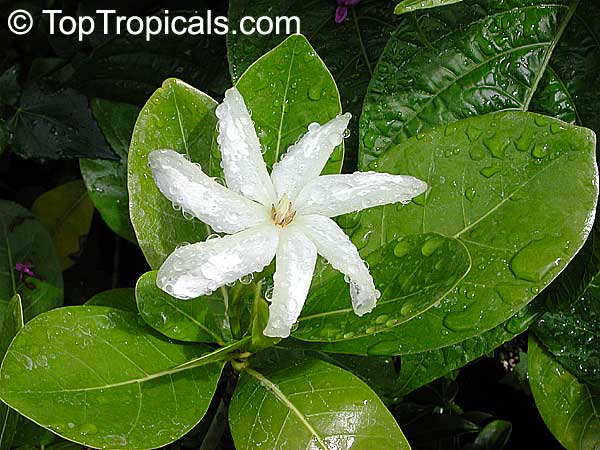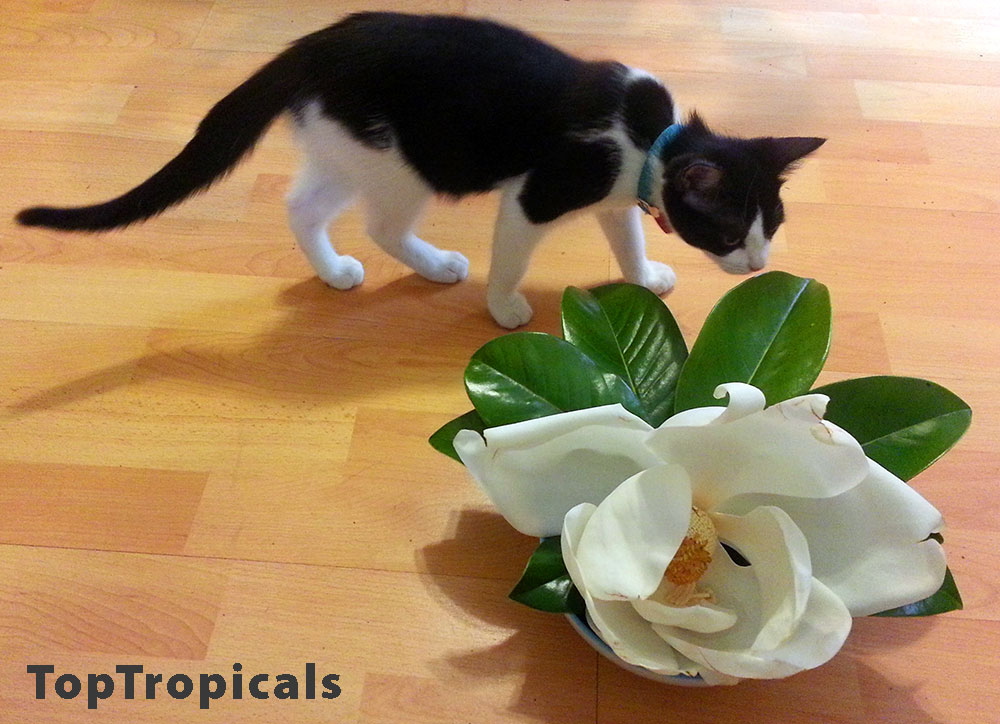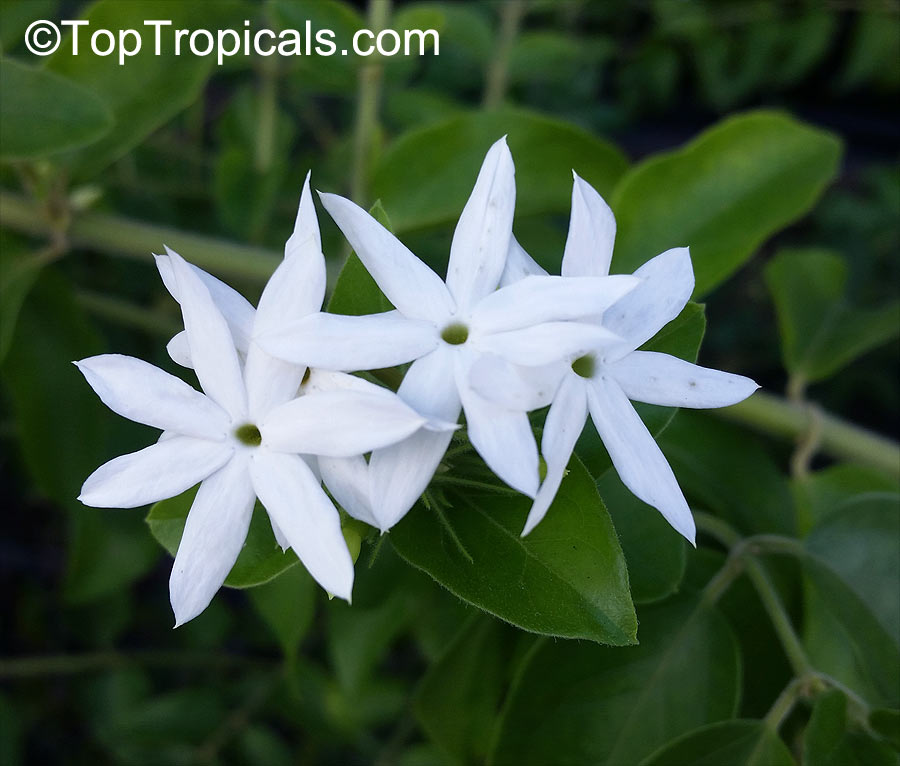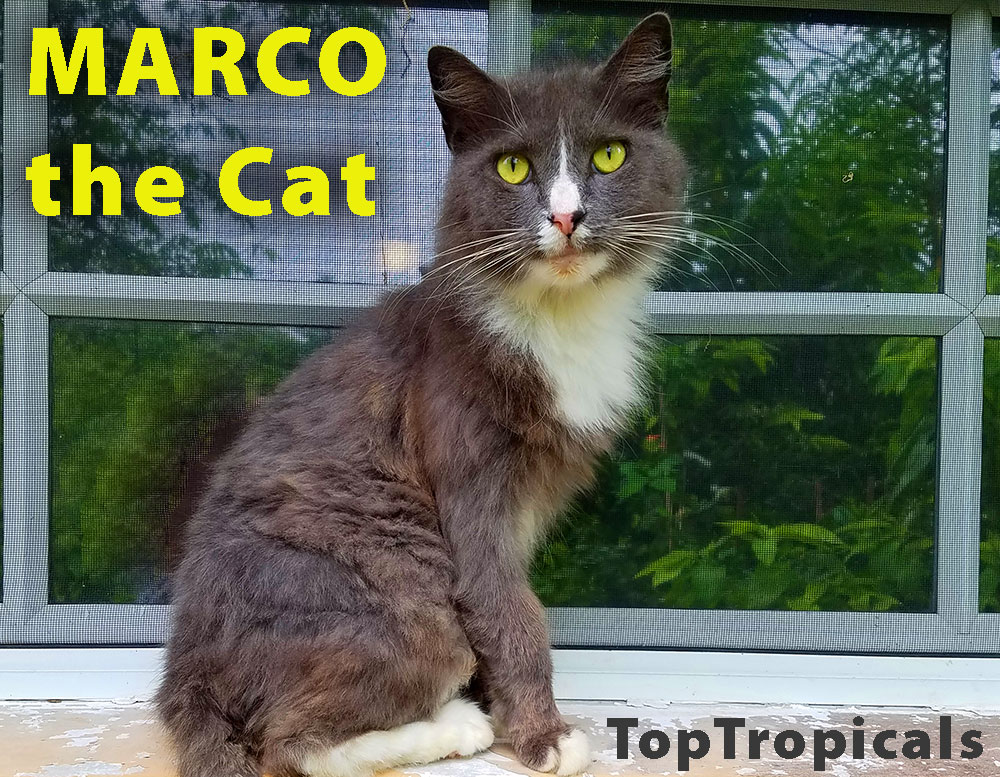Garden Blog - Top Tropicals
Date:
NEEM - The Free Tree of India
By Onika Amell, tropical plant specialist
Q: What is Neem oil and tree, and and can we grow the Neem tree here in the US?
A: Neem! What an extraordinary, fascinating tree! I'm personally convinced every garden should have one, if your climate allows it. Neem tree - Azadirachta indica - will very quickly become a valuable shade tree in your garden. They can grow up to eight feet per year! Neem trees are also known to grow very well in areas with infertile soil and under very dry conditions, which makes them perfect for xeriscaping. Not only is Neem fast-growing, but it's a beautiful tree with wide-spreading branches and dark green leaves. It will form a dense, round canopy, up to 60 ft wide.
This wonderful tree has been used by humans for thousands of years. Did you know Neem has more than 100 unique bioactive compounds? Surprisingly, a lot of gardeners are still unfamiliar with it!..
Date:
Meet PeopleCats of TopTropicals. Cat of the Day: Chief
Shipping Department Supervisor
Chief is one of the oldest PeopleCats at TopTropicals. And of course the
most experienced one. So he is in charge of the Shipping Department.
Chief likes to chill out in front of the nursery gate together with Marco, Lil S*t and Dobi Duck.
Chief doesn't like car rides to his vet and when it happens, he is very
loud. The sound he makes is "Oy-yo-yo-yooooy!!!"
Chief likes milk. He has a white spot on his black face - from drinking
so much milk! No matter how much milk we buy for him, there never seems to
be enough. Chief even has a refrigerator for his milk. If you come to visit
Chief at TopTropicals Garden Center, you may bring him a small bottle of fresh
milk!
Thank you for your purrrrrrchase for Chief!
Date:
Fun of growing your own Pepper
By Onika Amell, tropical plant specialist
Q: Can you grow your own black pepper plants in the USA?
A: Who does not love the smell of freshly ground pepper, especially that lovely combination of white, green, black and red peppercorns, which are so much more interesting than just plain black corns. Yes, you can absolutely grow your own pepper! Peppercorns come from the plant Piper nigrum.
Growing Pepper Plant
Black pepper plants are actually vigorous vines, although they are
pretty slow growing and can be kept in a pot as a compact plant. But they will
need a strong support to climb over. Indoors, you can provide this support by
installing a trellis in a large pot. Some gardeners prefer to grow them as a
hanging plant instead. In warm climates, you can plant them directly outdoors
in a protected location with partial shade. These plants need rich, moist,
well-draining soil and warm, humid conditions. Peppers do not like temperatures
below sixty degrees, although they can survive some cold spells. It is very
important to bring these plants indoors or wrap them in a blanket if colder
weather arrives.
If you live in colder parts of the country, you can certainly grow
peppercorns in large pots. Grow them outdoors during the summer and move them
indoors during the winter, or grow them year-round in your greenhouse.
Houseplants will need bright light and consistent moisture. Spray the leaves regularly
with a bottle of water to increase humidity. Do not allow room temperatures
to fall below sixty degrees.
Besides the benefit of being able to grow your own gourmet pepper
corns, the foliage, as well as the flowers on this plant, are beautiful in its own
right. Off-white flowers appear from spring through summer, followed by slow
fruit production. The berries will appear on spikes, with 50 to 60 berries
per spike.
Fertilize this vine in the spring before new vigorous growth emerges. We
recommend:
Tropical Greenhouse Plus - Plant Booster
Tropical Allure - Smart-Release Booster
You may be surprised to learn that black, white, green and red peppercorns are all the same seed on the same plant in the various stages of development and processing.
Black peppercorns are the most familiar and come from the corns that have reached their full size but are still green and not quite ripe. They are picked and allowed to dry in the sun. Enzymes in the berries cause the skin to turn black during the drying process. They are the strongest in flavor.
White peppercorns are the mature berries that ripen to a red color before being picked. After harvesting, they are soaked and rubbed free of the outer skin down to the smooth white underlayer, then dried and bleached by the sun. They are slightly milder than black pepper.
Green peppercorns are the unripe peppercorns picked at the same stage of ripeness as black peppercorns, but not allowed to dry. They can be pickled in vinegar or brine. They are the least pungent.
Red peppercorns are the mature, but unshelled version of the peppercorn. One can usually find them in some gourmet and health food stores. They can be quite expensive.
Ground pepper will only stay fresh for about three months, but
peppercorns will last indefinitely. To make the most of your pepper harvest, store the
peppercorns in an airtight container in a cool, dark location. Grind them
immediately before use for the best flavor.
There is nothing like freshly ground black pepper simply combined with
a good quality olive oil and a splash of balsamic vinegar. This makes a
wonderful dipping sauce for fresh bread. Simple, yet elegant. All the better if
the pepper was grown in your very own garden!
Date:
Meet PeopleCats of TopTropicals. Cat of the Day: James Coconuts
Winning a Lucky Ticket for a Croissant
Many of you have already met James Coconuts who has been in charge of
our Customer Service Team for a long time. After many years of hard work,
Coconuts is now finally retired in a comfortable home but still does some
consulting for Anna Banana and other office team members. So you will hear from him
again in our Blog, helping with planting, and organizing holiday events.
Originally, Coconuts came from the Middle-of-Nowhere (what a surprise).
Tenants from our old property in Punta Gorda left him behind when they moved
out... So Coconuts lived in woods for a month and, considering being deaf
(but not dumb!) from birth, living in the wild was quite a challenge for him.
When he saw our car, he jumped right into the open trunk and never regretted
that decision. We left us no choice but to take him into our big CatFamily. He
had starved so much that he ate a whole croissant... as we had nothing else
to offer at the moment... Since then, Coconuts went through lots of troubles
including a minor stroke, being run over by a truck, lost in woods again for
a month, and surviving a wild animal fight followed by a life-threatening
abscess. Finally, he decided to stay away from trouble and happily landed on his
couch with Margaritas and Nachos, getting chubby, singing his favorite opera
songs, and writing poetry.
Date:
Fertilizing in Winter?
Q: I'm a bit confused about what winter fertilization schedule I should follow in South Florida. For blooming plants, usually, I use a monthly granular bloom booster fertilizer as well as a liquid fertilizer every 10 days or so. Should I continue that schedule in the winter as well? Should I stop fertilizing altogether in the winter? How about fruit trees? What fertilization schedule should I follow in the winter?
A: Here is a general fertilizing schedule for established plants that we follow here
in SW Florida.
The rule of thumb is, do not fertilize (with macro- NPK elements) when
minimum temperatures drop below 65F and stay at that level for more than 7
days. At this temperature point, most of the tropical and subtropical plants
slow down their metabolism and some of them going into dormancy. This means,
nutrients are not consumed as much as during active growth period, and built-up
nutrient supply within a plant plus whatever is available in the soil is
just enough to get by through the winter. So additional fertilizing is not
necessary. You may continue micro-element supplements and bio-stimulants
throughout the year. In fact, it is highly recommended to do so, to help the plant
survive cold spells. These are very effective tropical plant protectors:
SUNSHINE-Epi - Brassinosteroid plant hormone
SUNSHINE-Power-Si - Advanced plant protector with Silicon
SUNSHINE SuperFood - Complex microelement supplement
This rule is applied to both flowering and fruiting plants, in general. However, some species are winter-flowering and winter-fruiting. For those, you can make an exception and provide extra nutrients for flowering and fruiting, as long as the weather stays warm. During cold spells, avoid any NPK fertilizers and use only bio-stimulants and micro-elements. If you apply NPK during cold, it won't be consumed by a plant, build up in the soil, and may create a root burn situation.
In simple words, fertilize from March to October. Give plants some rest from November to February.
Date:
Meet PeopleCats of TopTropicals. Cat of the Day: Wesley (Vasiliy)
Vasiliy is Russian Blue. Everybody calls him Wesley. Wesley is Marco's twin brother. They both were found as little kittens in a box
that someone dropped off... right, under TopTropicals car.
Marco is long hair, and Wes is short hair, so Wes doesn't get a haircut
like his bro.
Although Wes is much bigger and fatter, he is not as brave as skinny Marco
who fearlessly spends his days at the front gate. Wes is afraid of Thunder,
Rain, and a Doorbell. So he is mostly hiding behind the scene... unless food
is on the table!
In the photo: Wesley Roll - bikini shot
Date:
Gardenia flowers: how to prevent bud-drop
Q: My gardenia looks beautiful, but the flowers fall off of it before they even open up, the majority of them get this brown color at their base. Can you point me in the right direction.
A: There are 3 possible problems, either one, or a combination:
1) Lack of light
2) Too much water
3) Lack of micro-nutrients in soil
Try the following treatments:
- micro-elements SUNSHINE-SuperFood as foliar spray + drench rootball,
once a month, it will improve quality of the flowers.
- Silicon protection: SUNSHINE-Power-Si. This supplement has Silicon as
an active element (Si). Adding it to soil or/and over foliar spray can
immensely enhance plants' resistance to external factors and boost their growth and
health.
Make sure the soil is not soggy, reduce watering especially during
fall/winter.
Date:
Meet PeopleCats of TopTropicals. Cat of the Day: Lil-S*
You know how it is, cats are like potato chips, they can't be just one.
And they come to you, they adopt you. They always pick the right people.
Every one of them has a story of their appearance.
Lil-S* came from a car engine. One cold winter morning of 2013 when we
were about to start a car... lil "meow" squeaked as a warning... Thank God
the engine wasn't started. She was hiding from cold under the hood right on the
engine, probably still catching some warmth from it... She was 4" size
kitten that fit in a palm of your hand... And she always has been a handful!
That's why we named her Little Sh*t.
Lil-S* likes to hang out with Marco in front of TopTropicals gate, greeting the customers.
Date:
Fragrance of Angel Hair Jasmine
Q: I got angel hair jasmine, it started flowering, but it does not have any smell. What can be done?
A: Jasminum pubescens - Angel Hair Jasmine has very fine fragrance. It is
not as strong as some other jasmines like Sambac for example. However flowers do have a sweet scent especially in
the early morning hours, as long as the plant is well-established, grows in
a warm and humid environment. Keep in mind that flowers on young small plants
that do not have a developed root system, may not be as fragrant as on
mature vigorous specimens. Also, this jasmine needs a full sun location and
regular fertilizer for profuse flowering.
We recommend the following fertilizers to boost flowering energy:
- Pink N Good Daily Plant Food - Flower Booster
- Plumeria Top Dress - Smart-Release Booster
Use microelements at least once a month to improve plant vigor and quality
of flowers
Date:
Meet PeopleCats of TopTropicals. Cat of the Day: Marco
Cat of the Day: Marco
When you visit TopTropicals Garden Center, the first Purrrrson that greets you will probably be Marco. He likes to chill out right at the parking lot under the shady oak!
Marco is a long-hair Russian Blue, and it is too hot for him in Florida. So he gets a fashionable Lion Cut every couple of months!
See more PeopleCats of TopTropicals
